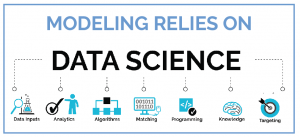New Proactive Enrollment Management Paradigms for TODAY
The challenge to fill independent schools has never been greater. Many of the reasons are well known: incomes that haven’t kept up with tuition; new, more inviting options from public education; and the difficulty many schools have in concretizing and effectively conveying their value propositions.
Unfortunately, the reaction of many schools in light of these challenges has been to do “more of the same.” This is regrettable since the current system of relatively unfocused outreach in the hope that “they will come,” is increasingly not working. Case in point: an analysis of NBOA’s Business Intelligence for Independent Schools (BIIS) dataset indicates that during the period 2015 to 2017, the number of applications in 52 percent of the participating schools actually declined. In 40 percent of the schools the decline was 5 percent or greater.
But it need not be this way. The reality is that in light of new data science tools and sophisticated social science-based marketing, many of our schools are unintentionally recruiting new families in the wrong way. In some ways they are doing it backwards. Instead of waiting until families come to them, schools should be identifying prime families and going out and getting them.
Here are two specific strategies that cutting-edge schools can employ to change this old school paradigm.
1. Using the power of advanced statistical analysis, plus a wealth of newly accessible demographic information, allows a school to (a) define in a statistically rigorous manner the distinctive demographic and lifestyle profile of its parent body, and (b) to identify and rank order every “lookalike” family in its marketing area in terms of the degree of their similarity to those families. What this means is profound: Schools can have access to virtually every likely prospect before they do any marketing outreach! Schools can have this information on or before the beginning of the “Recruitment Season.” A highly respected Enrollment Manager, at a recent national AISAP conference, called this approach “Data 2.0” relative to all previous “Data 1.0” approaches to identify prime prospects.

2. Schools conversant with sophisticated consumer marketing techniques also recognize that the most potent unit of recruitment strategy focus is not the individual family, but rather the market segment. They recognize the need to identify and analyze the sub-segments within their population — in essence, the social networks, that are the biggest influencers on a school’s enrollment prospects — and to cultivate them in order to gain broader voluntary access to those networks. These schools identify catchment points (churches, voluntary organizations, sports clubs, professional networks, etc.) that bring network members together, and they arm ambassadors with the information and motivation to engender interest, then investigation (visits), applications, and matriculations. They count the potential prospects these market segments/social networks can account for and set market share targets for them. They conduct research among their members to hone in on required value proposition evidence, and train ambassadors from among their members. They learn, by trial and error, how to optimize their success penetrating these segments. Their enrollment pipeline analysis focuses on market segments.

MEASURING SUCCESS EXPERIENCE
My experience with this approach during the course of a foundation-funded program with 26 Jewish day schools, validated the success of this strategy. The focus on market segmentation, rigorously managed, enabled the vast majority of these schools to increase their entry grade enrollment by 10 percent or more in the year following adoption of this approach.
BENEFITS OF DATA-ENABLED ENROLLMENT MANAGEMENT
So imagine, before the start of the school year, you have identified all of your primest of prospects based on a “lookalike” demographic analysis, as well as your market segment growth targets and their key members. The job focus now shifts to generating the most compelling messages to subsets of your market segment based on research. You can employ professionalized ambassadors and the gamut of marketing communications tools to deliver those messages — not to some nebulous set of consumers, but to very particular ones. The tracking of success or failure is easy. Every month or week or day, you can check how many prime prospects have inquired, visited, applied, etc. You can clearly identify what works and what doesn’t.
Using these techniques, we can now become in Enrollment Management what many of us we say we are as a school: A true proactive learning organization!
If you would like more information on how to use data science or market segment management to power up your school’s proactive recruitment program, please contact Dr. Harry Bloom, Senior Vice President of Client Solutions at Measuring Success Harry.Bloom@measuring-success.com; 617-212-4910.